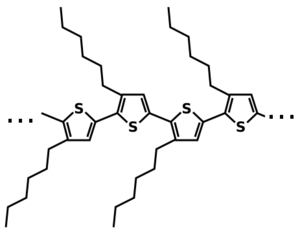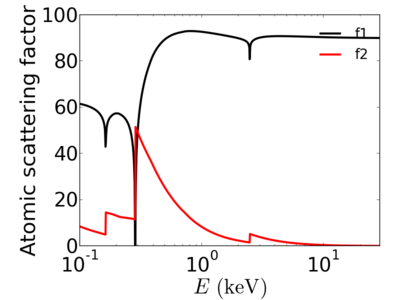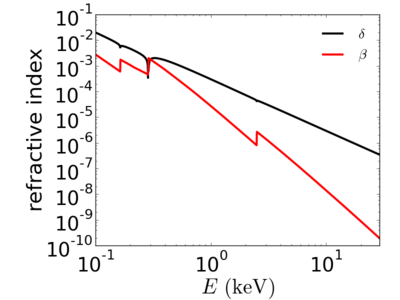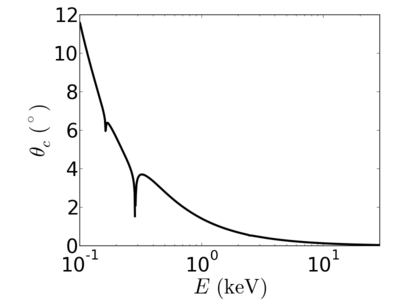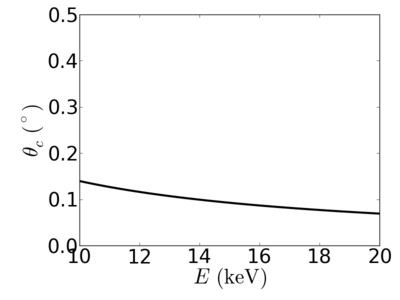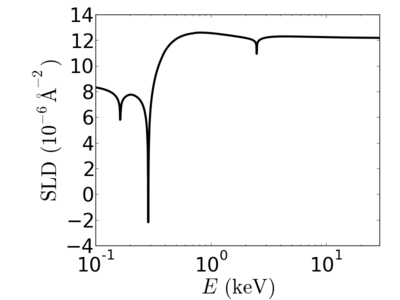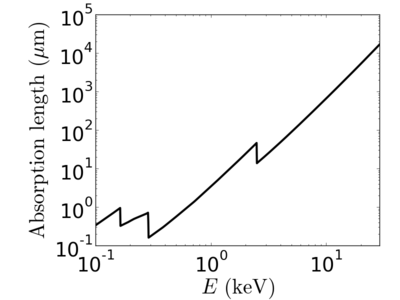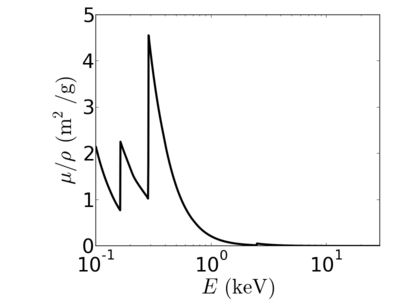Difference between revisions of "Material:P3HT"
KevinYager (talk | contribs) |
KevinYager (talk | contribs) |
||
| Line 62: | Line 62: | ||
| 0.0248 | | 0.0248 | ||
| 12.2 | | 12.2 | ||
| + | |} | ||
| + | |||
| + | [[Image:P3HT-atomic scatt factor.png|400px]][[Image:P3HT-n.png|400px]] | ||
| + | |||
| + | [[Image:P3HT-crit.png|400px]][[Image:P3HT-crit_zoom.png|400px]] | ||
| + | |||
| + | [[Image:P3HT-critq.png|400px]][[Image:P3HT-SLD.png|400px]] | ||
| + | |||
| + | [[Image:P3HT-AttLen.png|400px]][[Image:P3HT-mu.png|400px]] | ||
| + | |||
| + | |||
| + | ==See Also== | ||
| + | * [http://en.wikipedia.org/wiki/Polythiophene Wikipedia: polythiophene] | ||
Revision as of 12:51, 18 June 2014
Poly(3-hexylthiophene) (P3HT) is a polymer with chemical formula (C10H14S)n. It is a polythiophene with a short alkyl group on each repeat unit. It is noteworthy since is a seminconducting polymer; it can conduct positive charges (holes). It is a common material for studies of organic electronics (e.g. FETs) and for organic photovoltaics (OPV).
Properties
- Density: ~1.33 g/cm3
- Neutron SLD: 0.817×10−6 Å−2
| Material | density (g/cm3) | X-ray energy (keV) | X-ray wavelength (Å) | critical angle (°) | qc (Å−1) | SLD (10−6Å−2) |
|---|---|---|---|---|---|---|
| P3HT | 1.33 | 2.0 | 6.20 | 0.700 | 0.0248 | 12.20 |
| 4.0 | 3.10 | 0.352 | 0.0249 | 12.33 | ||
| 8.0 | 1.55 | 0.176 | 0.0249 | 12.29 | ||
| 12.0 | 1.03 | 0.117 | 0.0248 | 12.25 | ||
| 16.0 | 0.77 | 0.088 | 0.0248 | 12.24 | ||
| 24.0 | 0.52 | 0.058 | 0.0248 | 12.2 |
